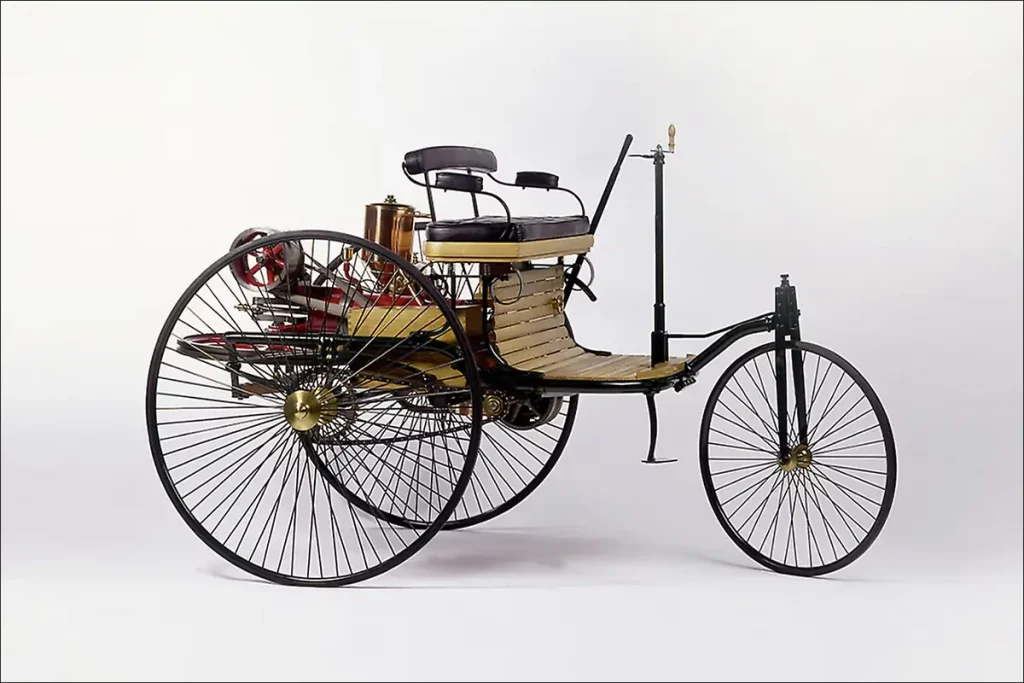From Steam Wagons to Supercars: An Insight into the History of The Car
Picture a world without cars—no road trips, no morning commutes, no fast food drive-thrus. Hard to imagine, right? The modern car evolved from predecessors like steam-powered vehicles and internal combustion automobiles, which were developed by various inventors in the late 1800s. But who invented the car as we know it?
The car, an invention that revolutionized the way we live, wasn’t developed by a single person overnight. Rather, it was the result of countless efforts by inventors, spanning over several centuries.
So, who first developed this technology that would come to revolutionize the world? Let’s drive through the history of the car and uncover the key players behind the invention of the car as we know it!
Early Innovators And Inventions
When we look at the history of early automobile invention, there were other inventors who invented car-like vehicles in the 1800s but were not quite the modern automobile. These basic types of self-propelled transport systems were:
- steam-operated vehicles,
- motor carriages,
- three- and four-wheelers,
- motorized wagons,
- and initial engine-operated carriages.
Perhaps then the more pressing question we need to ask is who invented cars as we know them today?
Of course, before we learn who was the car invented by, we should mention Gottlieb Daimler, who could be credited as the inventor of car engine. He created a gas engine with a vertical cylinder and gasoline injected through a carburetor. He also used this engine to build the two-wheeler “Reitwagen” and later to build the world’s first four-wheeler motor vehicle.
In 1885, Gottlieb Daimler (along with Wilhelm Maybach) and Karl Benz separately, yet almost at the same time, came up with their own gas-fueled internal combustion engines.
Daimler used the engine in a bicycle, while Benz used it on a three-wheel wagon. If we define a car as what we know today—a self-propelled passenger vehicle with all the features such as a gasoline-powered internal combustion engine, a fixed gear, a steering wheel, and brakes—then Karl Benz would be the creator of the car with his Benz Motorwagen of 1886.
Karl Benz: Creator Of The First Car

Karl Benz, a German engineer and entrepreneur, is widely credited as the inventor of cars. He created his first automobile in 1885, a three-wheeled motor carriage operated by an internal combustion engine.
Karl Benz’s Key Achievements:
- Fostered the development of a reliable gasoline-powered internal combustion engine.
- Incorporated an electric ignition system and a water radiator for cooling.
- Introduced brakes, a gearstick, and a steering mechanism for easier maneuverability and handling.
He applied for a patent on January 29, 1886, for his “Motorwagen” model, which can be deemed the first proper automobile built for use on the roads. Car models constructed throughout the 1890s improved upon his initial developments and incorporated rear seats, more wheels, and lighter frames.
Important Milestones in the Invention of the Car
Of course, Karl Benz built upon the work of other pioneers in this field as well. Let’s explore a few key developments before Benz that made the car possible:
| Year | Name of inventor of car prototypes | Country | Invention |
|---|---|---|---|
| 1769 | Nicolas-Joseph Cugnot | French military engineer | Considered by some to be the person who invented the car. He constructed a steam-powered tricycle for towing heavy guns, which could move at speeds of up to 3.2 km/hr. |
| 1863 | Jean Joseph Étienne Lenoir | Belgian engineer | Created and patented a coal gas-powered internal combustion engine that operates on a double-acting electric spark ignition system. |
| 1873 | George Brayton | American engineer | Developed an unsuccessful two-stroke kerosene engine that was considered the first practical oil engine. |
| 1881 | Gustave Trouvé | French electrical engineer | Demonstrated a three-wheeled electric-powered car at the International Exposition of Electricity |
| 1883 | Edouard Delamare-Deboutteville | French engineer | Built a single-cylinder, four-stroke engine powered by stove gas. |
How Were Cars Made in the Early Days?
After Karl Benz launched his Motorwagen, a patented car model, in 1886, this initiated a period of growth in automobile production across the globe up to the early 1900s. Let’s explore how the earliest cars were built.
Production Processes:
- Almost every part of a car was crafted entirely by hand, starting with the wheels, seats, bodywork, etc. Parts did not receive the benefits of machinery and uniformity initially.
- The early engines had many components that were mechanical and complex, requiring a lot of time to assemble and install.
- In the holdover trade from the horse carriage era, coachbuilders crafted the body frames, panels, and exterior parts by hand.
Quality Control:
- On the use of hand production, the major challenge early on was to attain reliability and consistency of the automobiles. Breakdowns were very common.
- The standardization of parts and engines began to progress gradually due to mass production systems that were incorporated in the 1910s and 1920s.
- The introduction of assembly lines and later automation reduced production cycle time and increased standardization by 1930–1940.
Thus, in the first years after 1886, car manufacturing was a purely hand-built process that yielded very low and unpredictable numbers. Early cars were considered toys for the elite and only a few were produced every year. It was the later efforts to expand production during the twentieth century that made cars popular due to their affordability and durability.
Exploring the Role of Automobiles in Modern Society
The automobile has had an immeasurable impact on world transportation, societies, structures, facilities, industries, and a lot more. Here is a summary of key ways cars revolutionized the modern world:
Transportation & Mobility
Cars provided individual transport and the ability to travel that had not been experienced before. Average people could go from one state to another or even from one country to another on their own time.
Commerce
The auto industry emerged as one of the most important sectors in manufacturing and commerce, with a long and complex supply chain and markets. Companies such as Ford, GM, Toyota, and Volkswagen employ millions of people.
Infrastructure Planning
Automobiles, in their broadest sense, defined infrastructures such as roads, highways, traffic systems, gas stations, parking facilities, drive-thrus, and many others. Car access saw cities and suburbs extend outwards further as people moved from one area to another.
Cultural Influence
Cars brought tremendous cultural shocks that could be felt through tourism, music, movies, design, sports, and many other fields. The automobile defined leisure time, individual freedom, and even the way people went on dates.
Negative Consequences
The increase in car dependence has led to the rise of car-centric cities. Such cities prioritize private vehicles in their design and infrastructure, which makes it difficult for daily life to function without them. Cars become a necessity rather than a choice.
As a result, these cities suffer from heavy traffic, increased environmental pollution, and health problems caused by decreased physical activity, and can be inaccessible to pedestrians, cyclists, and children.
The rising reliance on cars also increases cases of motor accidents. More than 44,000 people died in traffic crashes in the US in 2023- a 13.6% spike from post-pandemic 2019. (source: National Safety Council)
Frequently Asked Questions ( FAQs)
Who was the first manufacturer of electric cars?
In 2010, the Nissan Leaf became the first pure electric car that was produced by a major manufacturer for the mass market.
When did cars become a common possession for average families?
The average working-class household started owning cars only after the Second World War. Automobiles were a luxury item before Henry Ford introduced the assembly line in 1913, which made mass market production possible.
What were the early goals of car inventors in developing self-propelled vehicles?
Early car inventors tried to use new, small engines such as steam or internal combustion to create lightweight, self-propelled road vehicles. They began by manufacturing bicycles with engines, then progressed to motorized carriages that resembled today’s cars.
Who invented the cars that could go over 100 km/h?
The Belgian engineer Camille Jenatzy invented the first car to go over 100 km/h, the La Jamais Contente (the never-satisfied). It had a top speed of 105.88 km/h (65.79 mph).
Who invented a car that could run on water?
Several inventors, the most notable of whom is Stanley Allen Meyer, have claimed to invent a car that could run on just water. However, their claims were exposed as fraudulent and none of the invented cars ever earned a patent.
In which year was the car invented?
The car was invented in 1885 by German engineer Karl Benz, and it was patented in 1886.
Who created car racing?
Motor racing started in France with the Paris-Rouen rally held on July 22, 1894. The event was a result of the general public embracing mass-produced motor cars.















